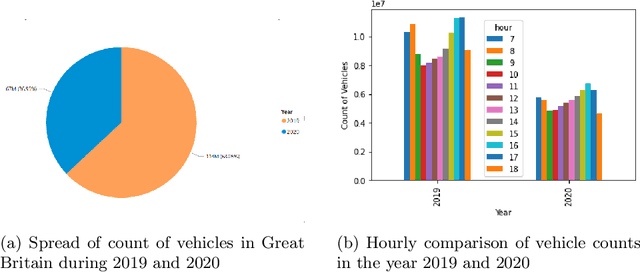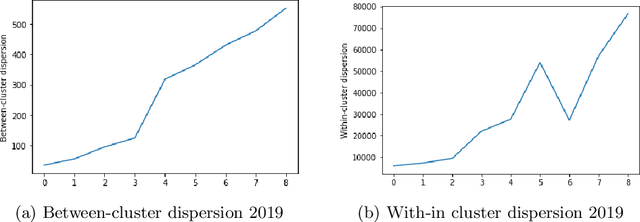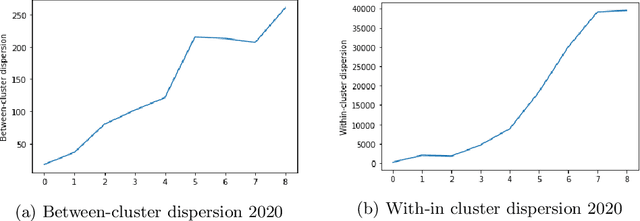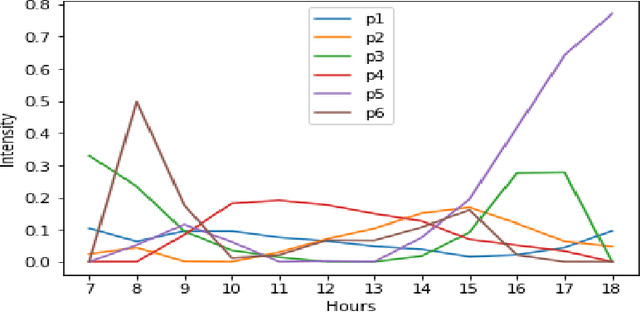Anand Paul
Nonnegative Matrix Factorization to understand Spatio-Temporal Traffic Pattern Variations during COVID-19: A Case Study
Nov 05, 2021



Abstract:Due to the rapid developments in Intelligent Transportation System (ITS) and increasing trend in the number of vehicles on road, abundant of road traffic data is generated and available. Understanding spatio-temporal traffic patterns from this data is crucial and has been effectively helping in traffic plannings, road constructions, etc. However, understanding traffic patterns during COVID-19 pandemic is quite challenging and important as there is a huge difference in-terms of people's and vehicle's travel behavioural patterns. In this paper, a case study is conducted to understand the variations in spatio-temporal traffic patterns during COVID-19. We apply nonnegative matrix factorization (NMF) to elicit patterns. The NMF model outputs are analysed based on the spatio-temporal pattern behaviours observed during the year 2019 and 2020, which is before pandemic and during pandemic situations respectively, in Great Britain. The outputs of the analysed spatio-temporal traffic pattern variation behaviours will be useful in the fields of traffic management in Intelligent Transportation System and management in various stages of pandemic or unavoidable scenarios in-relation to road traffic.
A.I. based Embedded Speech to Text Using Deepspeech
Feb 25, 2020



Abstract:Deepspeech was very useful for development IoT devices that need voice recognition. One of the voice recognition systems is deepspeech from Mozilla. Deepspeech is an open-source voice recognition that was using a neural network to convert speech spectrogram into a text transcript. This paper shows the implementation process of speech recognition on a low-end computational device. Development of English-language speech recognition that has many datasets become a good point for starting. The model that used results from pre-trained model that provide by each version of deepspeech, without change of the model that already released, furthermore the benefit of using raspberry pi as a media end-to-end speech recognition device become a good thing, user can change and modify of the speech recognition, and also deepspeech can be standalone device without need continuously internet connection to process speech recognition, and even this paper show the power of Tensorflow Lite can make a significant difference on inference by deepspeech rather than using Tensorflow non-Lite.This paper shows the experiment using Deepspeech version 0.1.0, 0.1.1, and 0.6.0, and there is some improvement on Deepspeech version 0.6.0, faster while processing speech-to-text on old hardware raspberry pi 3 b+.
 Add to Chrome
Add to Chrome Add to Firefox
Add to Firefox Add to Edge
Add to Edge